

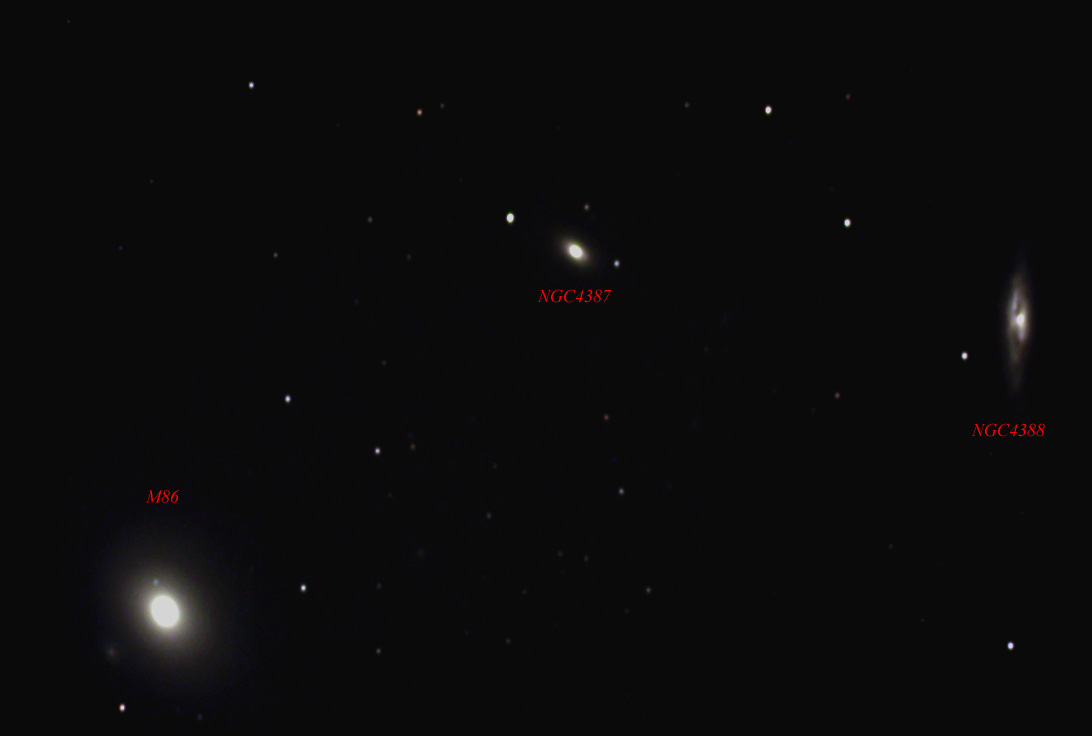
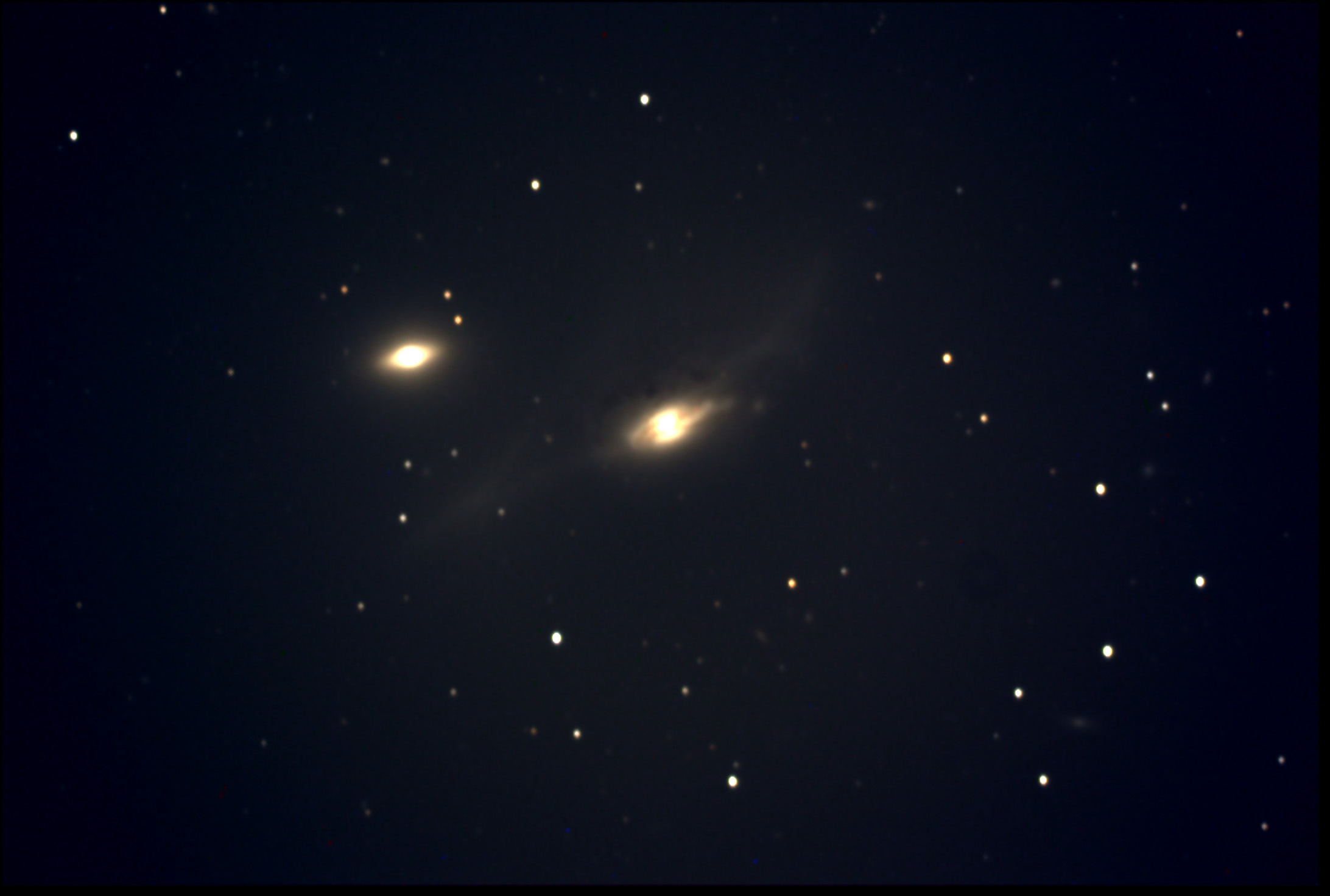
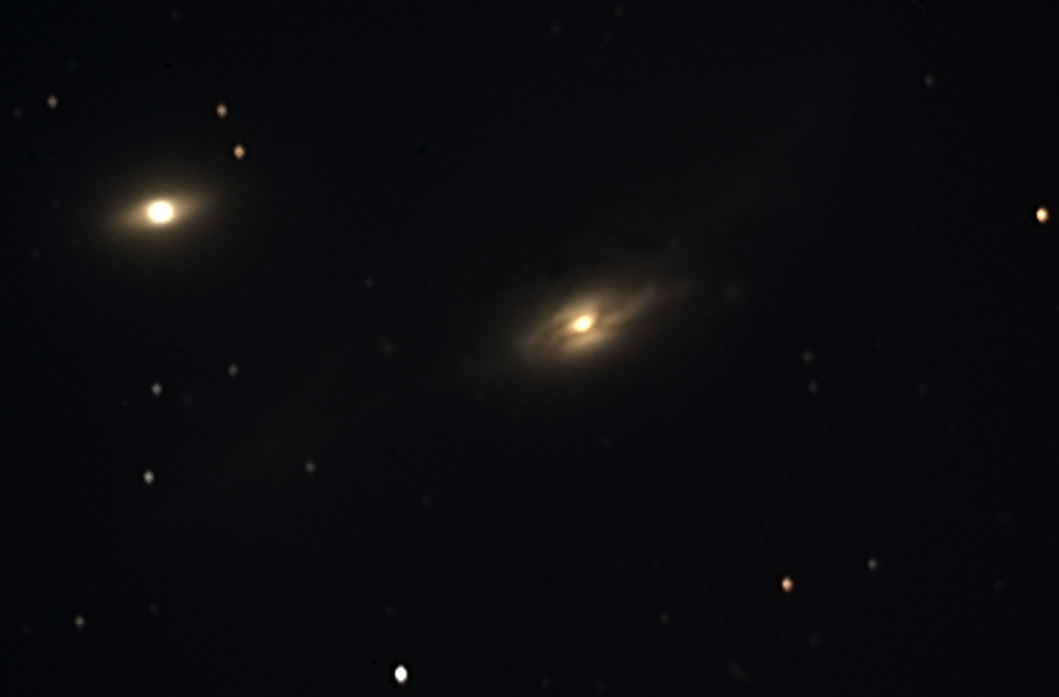
Sum of 5 x 120s luminance plus 1 x 120s for each of R, G & B filters, QSI 532ws camera at f 6.55.
Binning 2 x 2 on camera for each frame.
The aim here was to see how a quick exposure would look. This is much better than it would look down an eye piece and the total aquisition time is only 16 minutes.
A measure of the seeing on previous images indicated that often the seeing at 45 degrees above the horizon is about 4 arcsec (4"), and directly above the seeing is often about 2.5". With the camera at f 6.5 on the CGE1400, the resolution is 0.602" per pixel, therefore with 2x2 binning at 1.2" pixel the resolution is still well within the seeing resolution. The advantage of this is that the camera is much more sensitive in the 2x2 binned mode.
NGC4388 was a surprise to me, it looks really nice even though the exposure is so short. The galaxies in this photo are part of the Virgo cluster of galaxies about 50 million light years away. M86 is classified as an elliptical galaxy.
Sum of 6 x 240s luminance plus 2 x 240s for each of R, G & B filters, QSI 532ws camera at f 6.55.
Left picture: contrast and brightness levels have been set to show outer reaches of NGC4438.
Right picture: contrast and brightness levels have been set to show the core of NGC4438
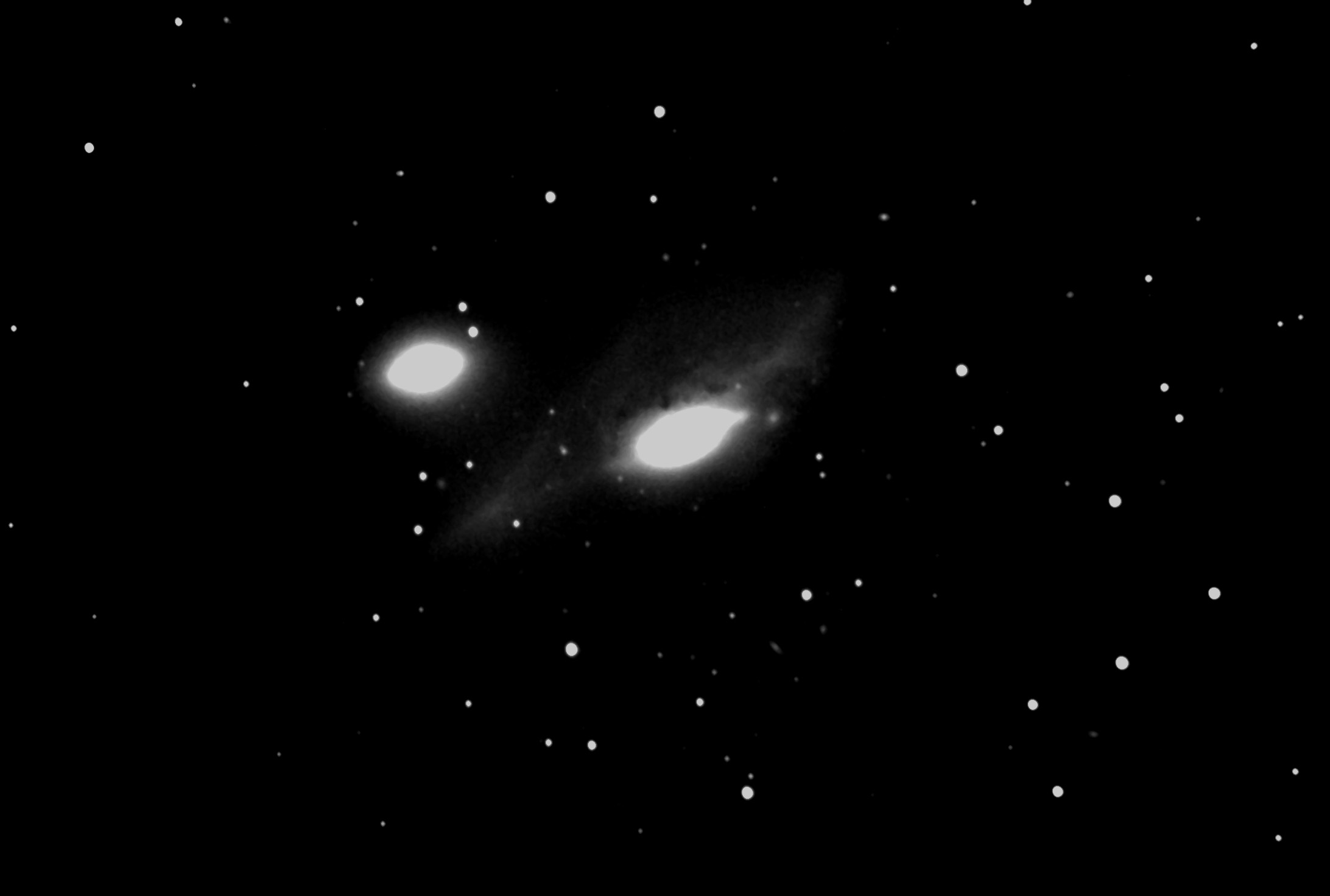
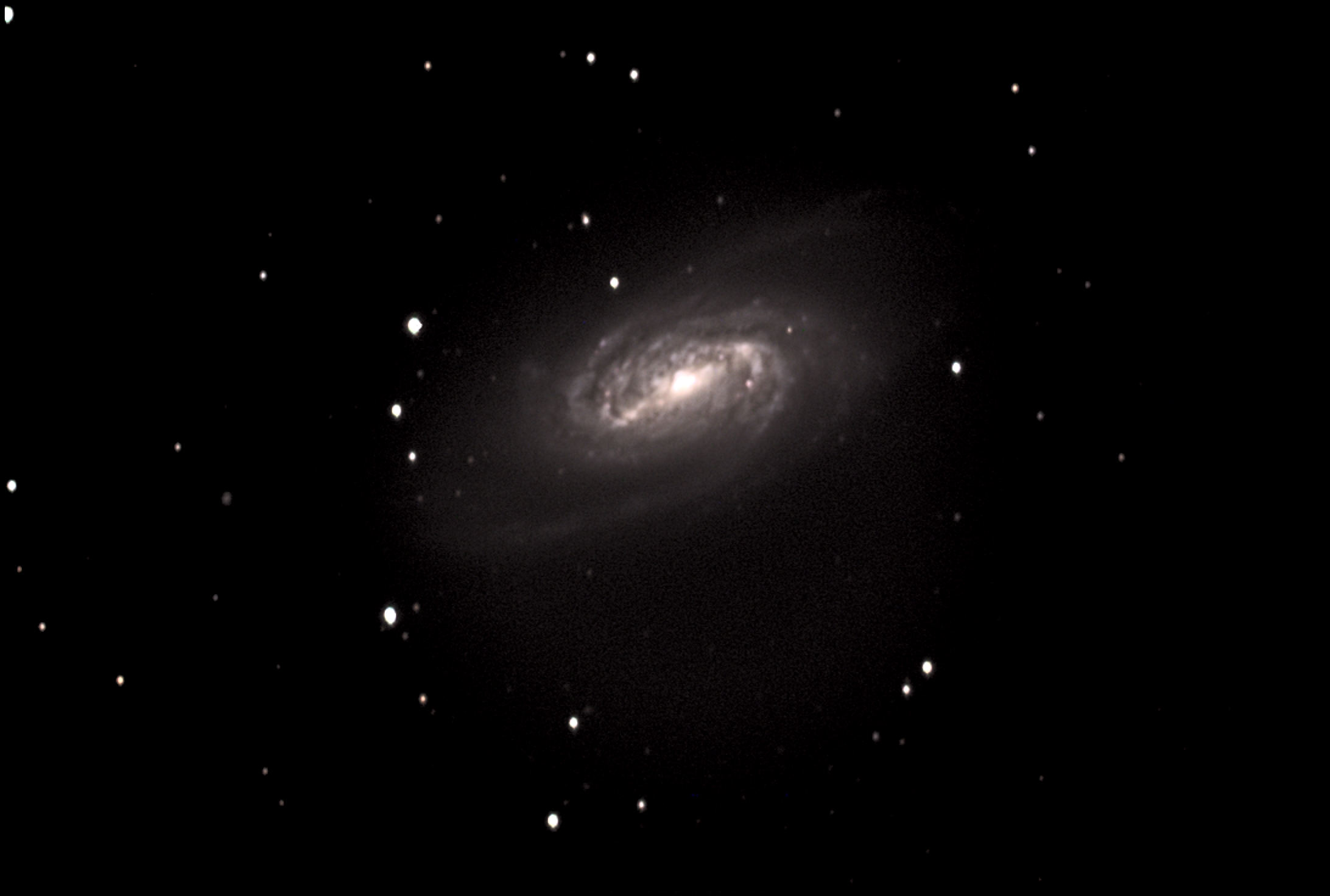
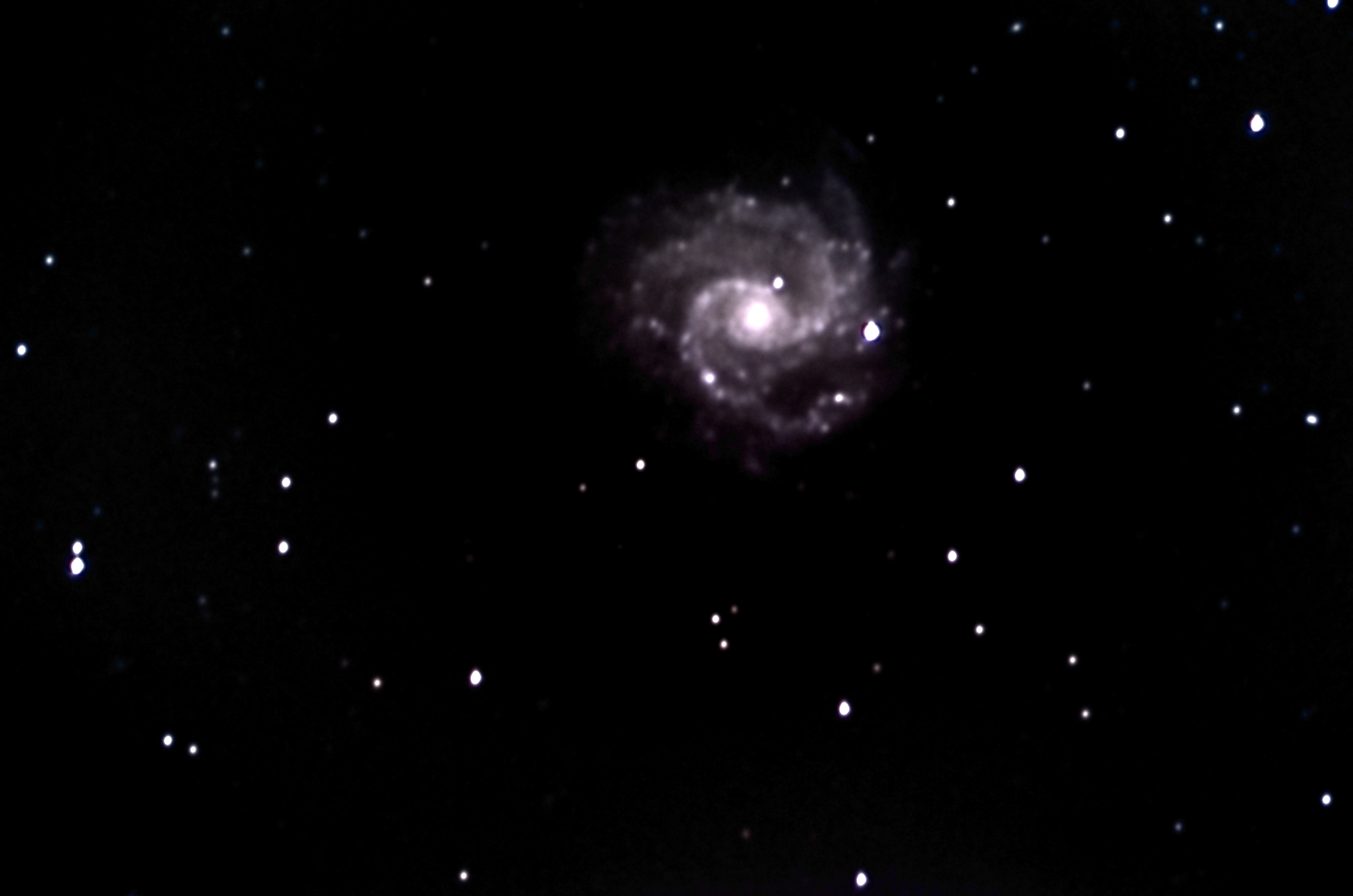
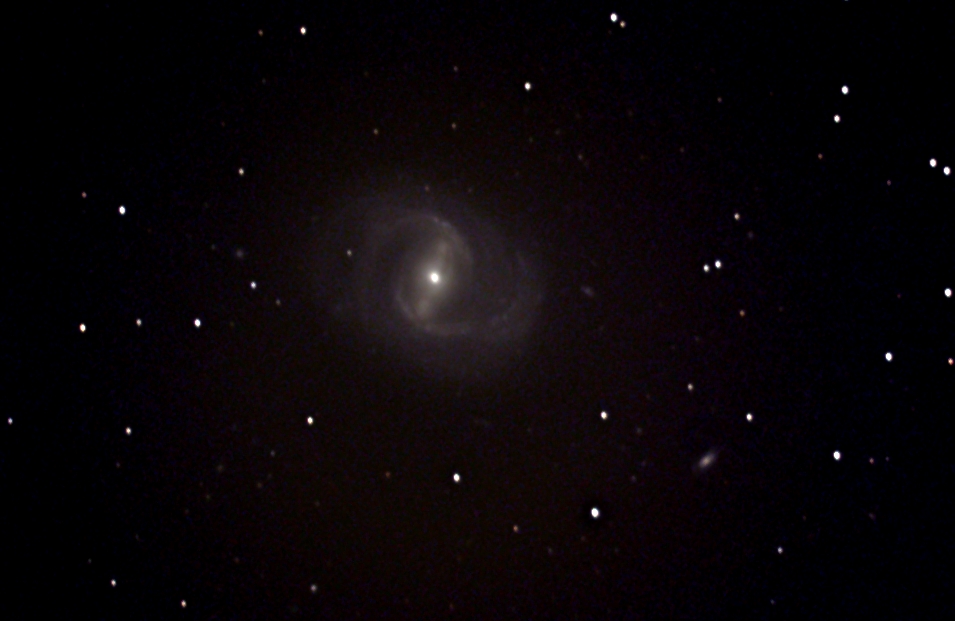
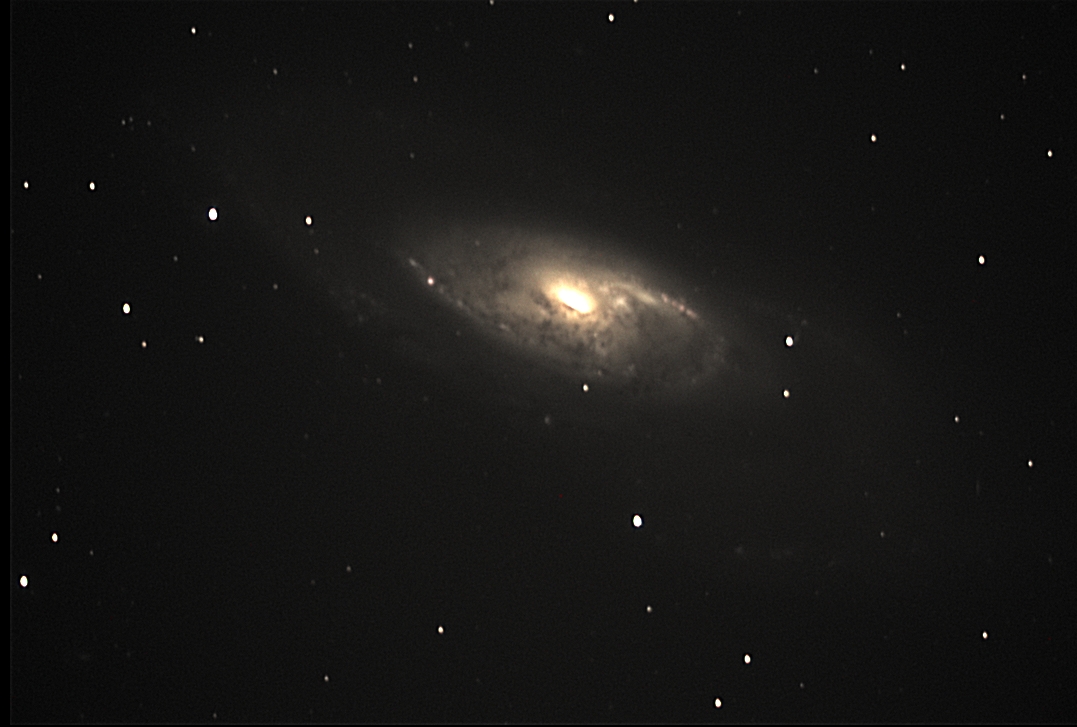
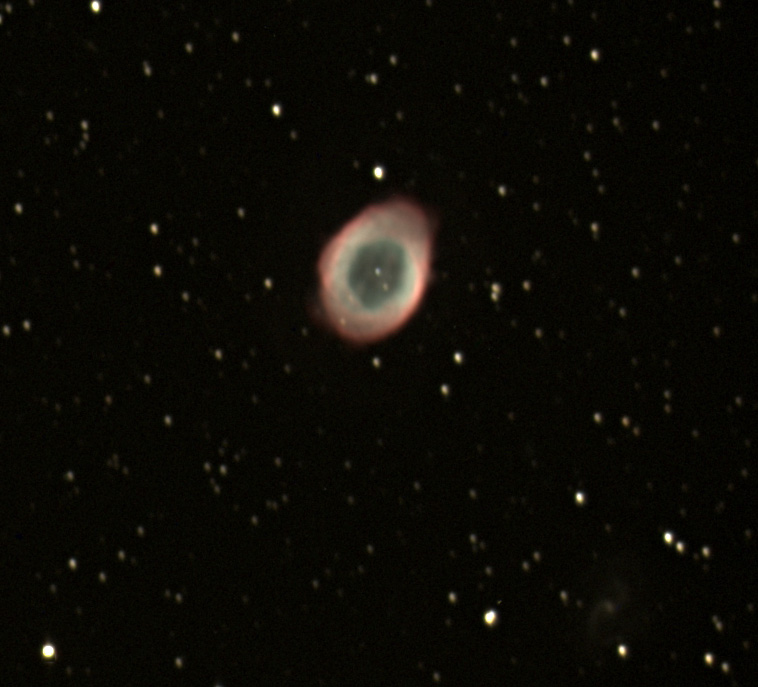
The core of NGC4438 is very interesting, very bright, and is thought to possibly have an active black hole at its centre.
To the left is an image of NGC2903 taken on 1st April 2009.
Sum of 6 x 240s luminance plus 2 x 240s for each of R, G & B filters, QSI 532ws camera at f 6.55
The brighter stars were a bit blobby tonight, either the tracking is out or the wind was causing a problem. The autoguider seemed to be jumping round rather more than normal, still the image is acceptable.
NGC3184 taken on 24th April 2009.
Sum of 3 x 300s luminance plus 3 x 300s for each of R, G & B filters, all frames binned 2x2, QSI 532ws camera at f 6.55
This is a low surface brightness object, but a lovely example of a classic spiral. It was windy tonight (15-17mph ) and the CGE1400 was being shaken quite badly, this made the image look out of focus, although the telescope was actually very carefully focused before taking the image.
This image could really do with more time on a less windy night.
The Crescent Nebula in Cygnus (NGC 6888) taken on 18th August 2009.
Sum of 30 x 20s luminance plus 15 x 20s for each of R, G & B filters, QSI 532ws camera at f 6.55
NGC7331 taken on 12th September 2009.
Sum of 6 x 300s luminance plus 2 x 300s for each of R, G, B &Halpha filters, QSI 532ws camera at f 6.55
This was taken using the QSI off axis guider unit and a Lodestar guide camera.
This is the same data for NGC7331 as that used in the above example only this time it was processed in a slightly different way. I quite like the way this has come out. In this example I stacked the different colours myself rather than letting the computer do it automatically. As far as I can tell is should be doing the same thing, but it clearly is not because the colours come out different. I need to work out why this happens. As always, the question becomes what is the real colour of this object. What I need to do here is identify a star and its spectrum and then correct the image accordingly.
.
.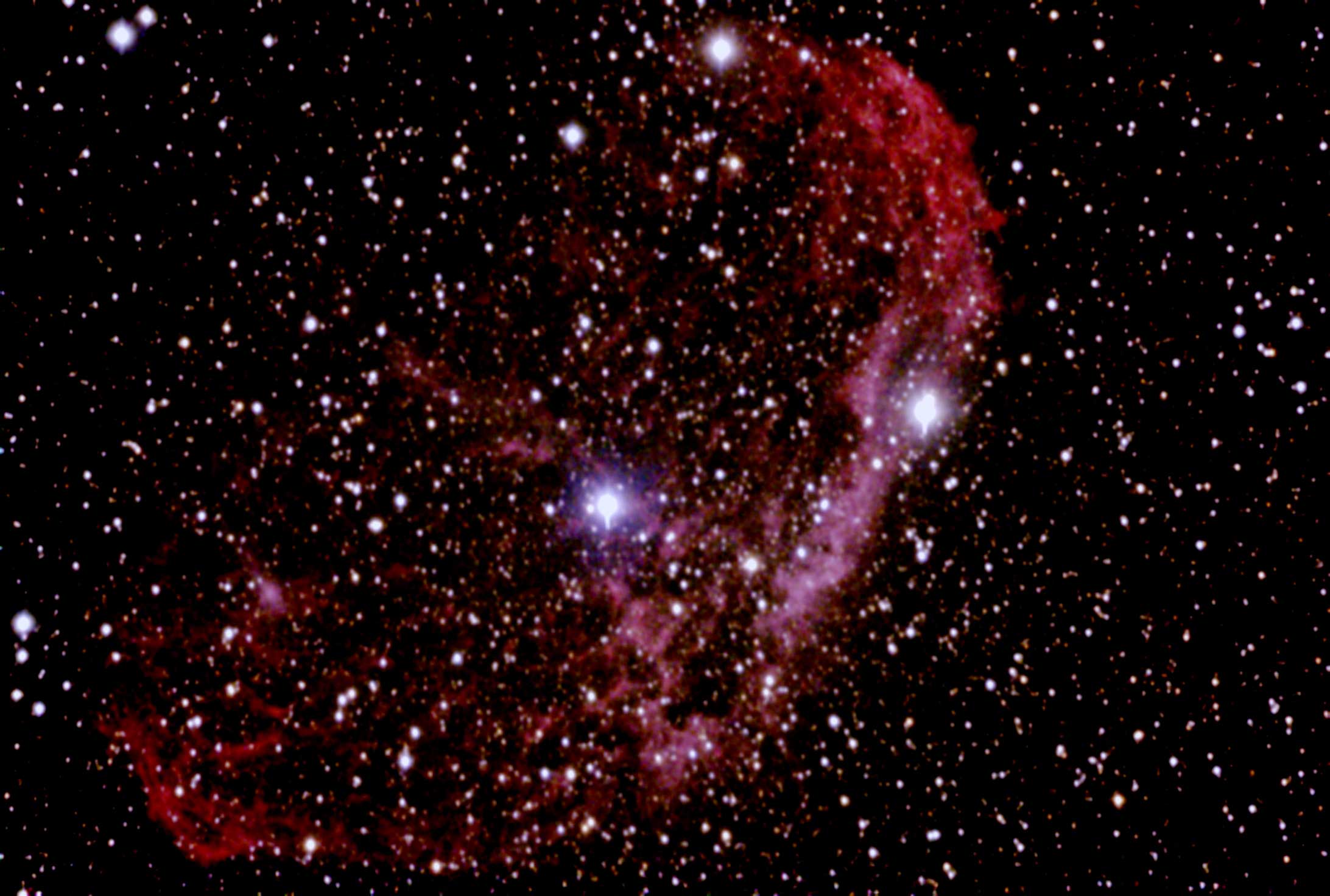
.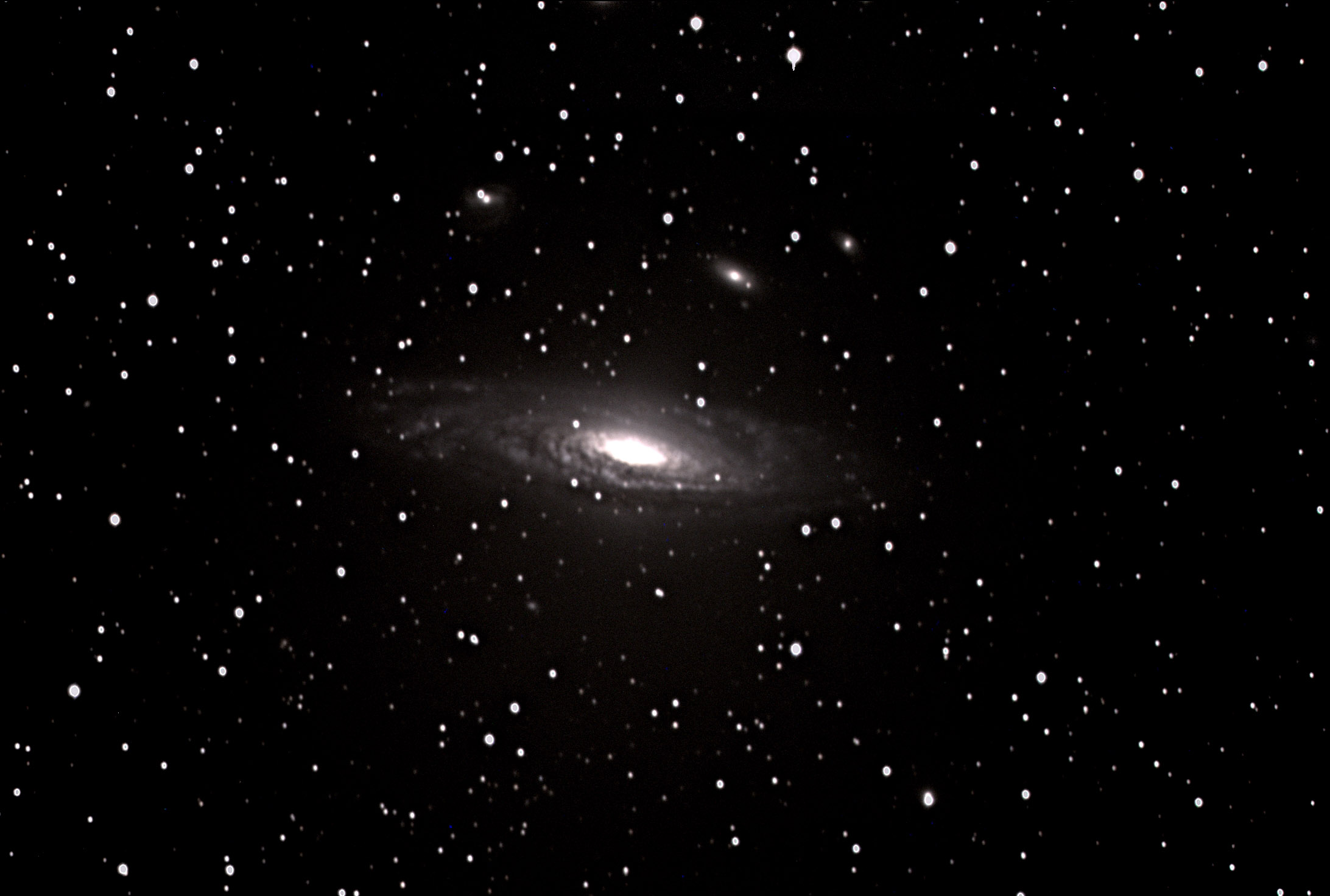
.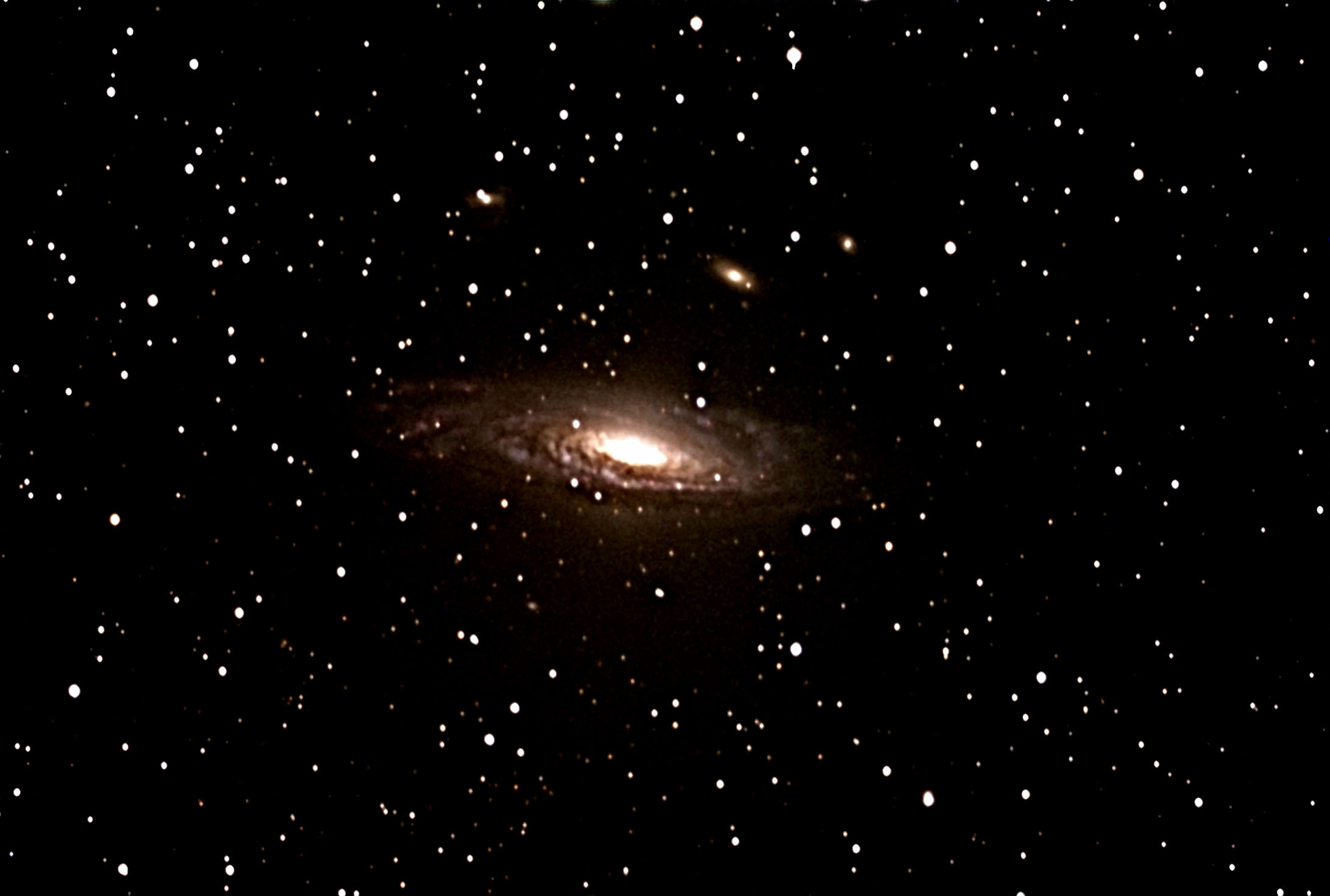
M106 (also known as NGC4258) is an active galaxy with a supermassive black hole at its centre. Active galaxies are very bright in the X-Ray, UV, Vis ,and IR wavelengths. It is thought that the active nucleus is powered by material falling into the central black hole. Intense star forming regions can be seen in the spiral arms in the picture above.
.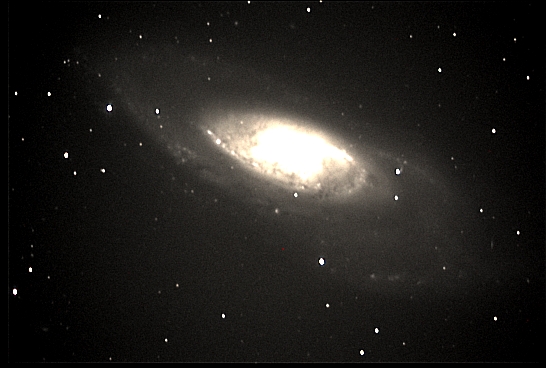
M91 taken on 26th April 2009.
Sum of 7 x 120s luminance plus 5 x 120s for each of R, G & B filters, QSI 532ws camera at f 6.55
Things rarely seem to go to plan. The image sequence was set running, after the first frame, which I checked had worked, a band of thin cloud moved over the region of sky that I was imaging in. Only the best frames were kept. I had planned1 hour for the luminance frames, but only got 14 minutes of usable exposures!
It can clearly be seen that this is an example of a barred spiral galaxy.
M106 taken on 26th April 2009.
Sum of 6 x 120s luminance plus 3 x 120s for each of R, G & B filters, QSI 532ws camera at f 6.55
This image was taken "quickly" at the end of the evening after the relative failure above. In this region of the sky it was very clear and so quite a reasonable image was obtained in a fairly short period of time.
This is the main core region of the galaxy. If you look carefully you can see that it extends much further out. A longer exposure would show this more clearly, something for another night. Below is the image with the core "burnt out" to show the fainter regions of this galaxy.
This image was taken on 17 August 2009. C14 at f6.55, QSI 532ws camera, LRGB filters 300s each.
If you look hard a spiral galaxy can just be seen towards the bottom right of the image. This is IC1296.